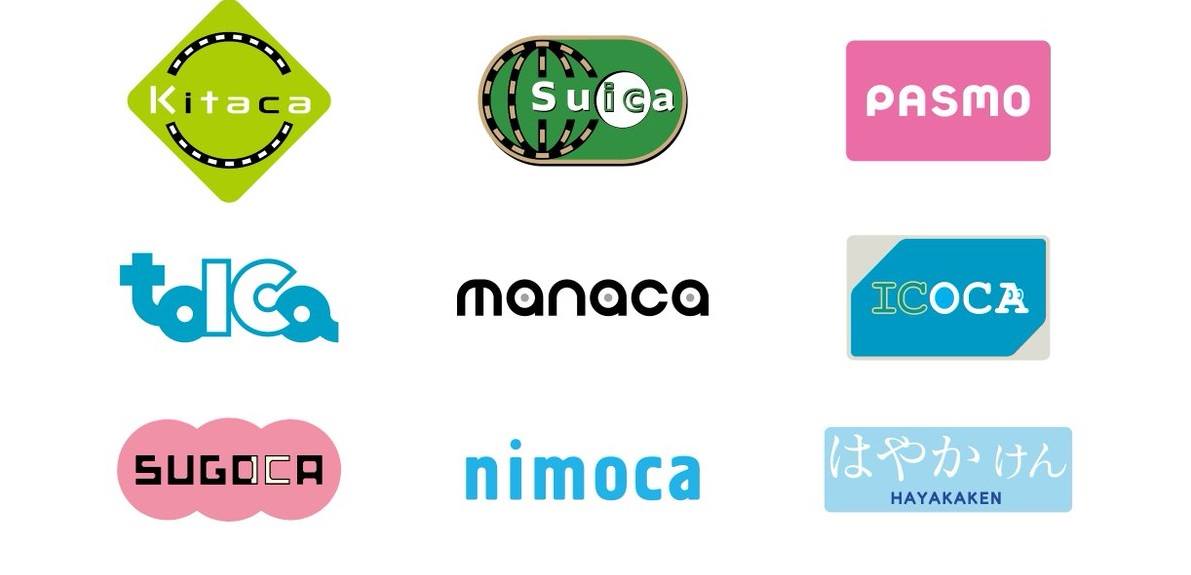IC Cards
Contents
An IC card, or smartcard, is a rechargeable plastic prepaid card used in Japan to pay train, subway, bus and monorail fares, and for e-payment at convenience and other stores, vending machines, station coin lockers, parking lots, and more. If registered, it can also be used as a monthly pass for a specified route. Most IC cards are contactless, so can be kept in a pouch or holder and passed lightly over the reader to effect payment.
Interchangeability Limitations
Which kind of IC card you purchase in Japan depends on which part of Japan you purchase it in. A specific type of IC card is purchasable only within a particular area; however, if that card is one of the 10 main IC cards in Japan, it can be used wherever any of the others is issued. But in most cases, this does not cover journeys across different areas.
Purchasing and Charging IC Cards
An IC card costs 500 yen to issue, refundable when you have finished with the card and returned it. IC cards can be recharged at any station ticket machine that bears the IC card symbol, or when getting on or off a bus.
At a station ticket machine, press the “Charge” button, insert the card, select the amount of the top-up, then insert banknotes. If you want a receipt, press the “Receipt” button before inserting money. Registered IC cards can be auto-charged (quick charged), but this requires registering the IC card to a specific Japanese credit card. The auto-charge function works only within the area where the card was issued.
Mobile Phone Apps
Suica has an app for smartphones that allow the user to do away with the plastic card and simply swipe his/her mobile phone or smartphone instead. Train reservations can also be made via the app. However, not all models of mobile phone and smartphone have the required chip inside (iPhone 7 and newer models, Apple Watch Series 2). The Suica app links to Apple Pay.
Lost Cards
Registering an IC card to your name saves you from loss if the card malfunctions or is lost, because an electronic record remains of the stored fare. Also, the card can be locked by contacting the IC card’s issuing company. However, lost cards can be reissued only in the area they were issued.
The 10 Interchangeable IC Cards
There are 10 major IC cards currently used in Japan, and since 2013 they have all been interchangeable with each other. The type of card you purchase depends on where you purchase it and can be used in any area where the following 10 cards are issued.

Suica :
JR East for the Tokyo metropolitan region, for Niigata and for Sendai
Pasmo :
Pasmo is also a Tokyo metropolitan region IC card, but is issued by non-JR railway, subway and bus operators
Icoca :
Icoca is issued by JR West in the Osaka metropolitan region, Kyoto, Kobe, Okayama, and Hiroshima
PiTaPa :
issuing area is Osaka, Kyoto, Nara, Nagoya – and a line in Shizuoka, PiTaPa can is primarily a postpaid card (within its issuing area, with a prepaid function for outside of it) that is linked to the user’s bank account
Toica :
The Toica card is issued by JR, it first started in Nagoya, but its area now covers Shizuoka and stretches from as far east as the Izu Peninsula to as far west as parts of Gifu and Mie prefectures
Manaca :
Manaca is, like Toica, also based in Nagoya, and is for use on non-JR trains and buses
Kitaca :
Kitaca is issued by JR Hokkaido and its area is the Sapporo metropolitan area
Sugoca :
Sugoka is issued by JR Kyushu, covers all JR transport services for much of Kyushu.
Nimoca :
Nimoca is the non-JR IC card for Kyushu, covering Nishitetsu lines in the Fukuoka metropolitan district, and certain other lines throughout Kyushu, and even municipal transport up the other end of Japan in Hakodate, Hokkaido
Hayakaken :
Hayakaken is a card issued by the Fukuoka Municipal Transport Authority for use on the municipal subway and buses
Local IC Cards
There are several other minor cards around Japan that are either not usable outside the area they are issued in or are only limitedly so. Many of these minor cards have “mileage” capabilities, whereby accumulated points can be used for fare discounts.
